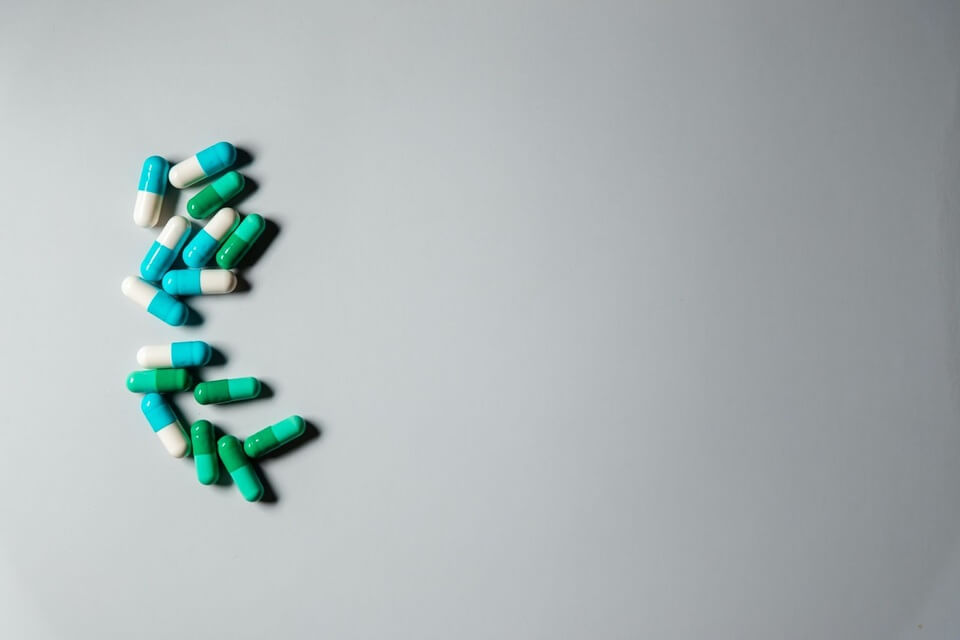- Probiotics can help you maintain proper levels of good and bad microflora so you stay free from infections like UTIs, yeast infections, and bacterial vaginosis.
- Your body naturally contains “flora,” which is just another word for the microorganisms—like bacteria—that your body houses. Although bacteria seems bad, there are actually good and bad bacteria present all over your body.
- Regular intake of probiotics can regulate the pH of the vagina, warding off bad bacteria in the process.
When it comes to feminine hygiene products, less is more. In fact, if you want to have the healthiest vagina, avoiding common products like feminine washes and feminine wipes is generally safest for most people. That’s because some feminine care products can disrupt your body’s natural processes designed to keep you healthy.
Vaginal wellness is about more than just taking daily showers and staying clean—there are biological processes occurring at all times in the body that can affect your vaginal health. For example, a vaginal pH imbalance can impact your vaginal health and make it more likely you’ll develop an infection like bacterial vaginosis.
One biological factor that greatly impacts your feminine health is your vaginal microbiota. If your vagina doesn’t contain high levels of good, infection-fighting bacteria, you’ll be more like to develop common bacterial infections like urinary tract infections (UTIs) or bacterial vaginosis and even pesky yeast infections.
The truth is, in order to regulate vaginal pH and maintain your vaginal hygiene, only one vaginal care product is necessary—probiotics. (1)

Bacterial Levels and Vaginal Infections: What’s the Causal Relationship?
Have you ever wondered about your vaginal discharge? While it can be annoying, vaginal discharge highlights an important thing to keep in mind when considering your vaginal hygiene—your vagina is equipped to clean itself. Vaginal discharge is your vagina’s way of flushing out bad bacteria and debris in order to keep your vagina pH balanced and healthy.
Your body naturally contains “flora,” which is just another word for the microorganisms—like bacteria—that your body houses. Although bacteria seems bad, there are actually good and bad bacteria present all over your body.

The types of bad flora you’ve probably heard of include flora like E. coli, staph, and yeast. Unfortunately, if your vaginal microbiome is disrupted, which can happen due to sexual activity, use of some feminine products like intimate washes, or certain gynecological health conditions, the bad microflora present in your vagina or urinary tract can add up and cause infection.
Good flora play a critical role in your health by keeping the levels of bad flora at bay. They also help maintain the vagina’s slightly acidic pH, which is between 4.1 to 4.5 in most healthy individuals. (2) There are plenty of factors that can cause an imbalance in pH levels, like:
- What you eat
- Hormonal changes during your period, pregnancy, or menopause
- Unprotected sex with multiple sex partners
- Excessive douching
- High levels of stress
- Antibiotics
Probiotics can help you maintain proper levels of good and bad microflora so you stay free from infections like UTIs, yeast infections, and bacterial vaginosis. Let’s dive into each of these common infections to investigate how probiotics can help prevent them.
What Causes UTIs?
Millions of women experience a UTI every year (over 150 million women, to be exact!). (3) UTIs can cause embarrassment, discomfort, and pain, and 20% of women who experience them will experience recurring or chronic UTIs after treatment is complete. (4)
UTIs occur in the urinary tract, which contains organs including the uterus, bladder, kidneys, urethra, and reproductive organs. A UTI occurs because bad bacteria, often spread from the anus area, colonizes in the urinary tract and starts multiplying. This bacteria may travel up the urethra, which is the organ which carries urine out of the body, and can infect the kidneys or bladder if it travels far enough.
Men have longer urethras, which means harmful bacteria that cause infections have a longer way to travel in the body. Women, on the other hand, have a shorter urethra that makes them more prone to UTIs and other genitourinary issues.
Most common UTIs are caused by the bacteria E. coli. There are many different strains of E. coli, not just the kinds that make the news. In fact, we all have naturally occurring E. coli in the gut that help with the production of the beneficial vitamin K2. Unfortunately, when some strains of E. coli spread to the urinary tract, a UTI results.
The symptoms of UTIs include:
- Frequent and strong urge to urinate
- A painful feeling when urinating
- Fever
Cranberry pills for BV can help treat UTIs by impacting E. coli’s ability to adhere to the walls of the urinary tract. If the bad microflora can’t stick to the urinary tract, they are dispersed when urinating, which can help reduce symptoms and treat UTIs.

What Causes Bacterial Vaginosis and Yeast Infections?
Two additional widespread vaginal infections that can result from an unbalanced vaginal microflora are bacterial vaginosis and vaginal yeast infections. These conditions are similar, but different.
Both infections are caused by a decrease in the body’s natural levels of lactobacillus species, a specific type of good bacteria. In bacterial vaginosis, low lactobacilli levels allow anaerobic bacteria to colonize, causing uncomfortable symptoms. In a yeast infection, low lactobacilli levels allow a fungus called candida albicans to grow.
Signs and Symptoms of Bacterial Vaginosis
21.2 million women are affected by bacterial vaginosis each year. (5) Symptoms include unusual vaginal discharge, a fishy smell, or a change in discharge color to gray or white. Most cases of BV can be treated by a medical professional, and they typically prescribe one of these three antibiotics to address BV symptoms:
- Metronidazole: Available both in the form of a pill or a topical gel that you insert into your vagina.
- Clindamycin: A cream that has to be inserted into the vagina
- Tinidazole: Taken orally
If bacterial vaginosis isn’t treated, it can lead to pregnancy complications, increased risk of developing sexually transmitted infections, and increased risk of developing pelvic inflammatory disease.
Signs and Symptoms of Vaginal Yeast Infections
Vaginal yeast infections are also common. Around 1.4 million American women deal with yeast infections every year. (6) Symptoms of yeast infections include irritation and itching of the vagina and vulva, pain in the vaginal area, or rashes. The most well-known symptom of yeast infections is a thick, white, odorless cottage cheese-like discharge.
Yeast infections are also typically treated with antibiotics. Unfortunately, antibiotics will also kill off healthy bacteria along with the bad, which can put you at risk for different health issues.
What do Probiotics Have To Do With Vaginal Health?
Now that you’re familiar with the causes of common vaginal infections, you might be wondering why using genital hygiene products—which millions of women use!—is bad, and what probiotics have to do with preventing these infections.
Vaginal health products and practices like feminine washes, feminine wipes, and douching can disrupt the acidic environment of the vagina. These products and practices clean the vaginal environment so thoroughly that both good and bad bacteria are wiped out.
Since good bacteria help prevent the growth of infection-causing bacteria, if they’re removed from the vagina, the vagina is at risk for infection any time new, bad bacteria is introduced—which, unfortunately, is extremely often. Inserting menstrual products can introduce bad bacteria, as can having sexual intercourse, practicing poor hygiene, failing to change out of clothes after swimming or exercising, or simply wiping the wrong way after using the bathroom. All these everyday activities can introduce infection-causing bacteria, and without proper levels of good bacteria in your vaginal microbiome, your body won’t be able to fend them off.
This is where probiotics come in. Probiotics replenish the body’s naturally occurring healthy bacteria, especially if those bacteria have been depleted or overrun with the bad bacteria causing infection. Probiotic lactobacilli help restore and maintain your vaginal pH and get your flora back in fighting shape. Regular intake of probiotics can regulate the pH of the vagina, warding off the bad bacteria that causes bacterial vaginosis, UTIs, and yeast infections in the process.
Taking a supplemental probiotic for vaginal health can help keep your vaginal microbiome balanced and your pH at optimal levels. Many foods are also rich in probiotic content, and eating them can help keep your vagina healthy.
Probiotic Foods for a Happy V
There are several sources of probiotics you can add to your everyday diet to support your vaginal health including:
- Yogurt: Choose yogurt with active cultures for maximum impact. Yogurt for breakfast or as a snack is a popular way to integrate probiotics and fruit into your diet.
- Kimchi: Popular Korean cabbage contains something called “lactic acid bacteria,” which can be beneficial for vaginal health.
- Kombucha: Fizzy and often infused with flavors, kombucha is well-loved by coffee and tea drinkers. Kombucha doesn’t just taste good, however; it also contains powerful probiotics in each serving.
- Sauerkraut: Kimchi isn’t the only probiotic-rich food made from cabbage; fermented cabbage is also the foundation for sauerkraut, which has a long shelf life and is rich in fiber; sodium; and vitamins B, C, and K.
- Miso: Fiber, proteins, and probiotics are all involved in the making of the Japanese classic miso, which can easily be added into your diet in soups, noodle dishes, and more.
Take Probiotic Supplements To Support Your Vaginal Health
Many vaginal practices and intimate care products, though popular, aren’t exactly great for your vaginal health. In fact, all your vagina needs to stay healthy is to be washed gently with warm water! If you want to do more to support your vaginal health, take a probiotic for women to support your vaginal microbiome and help your body naturally fight off pesky vaginal infections.
- https://www.medscape.com/viewarticle/408951_6
- https://www.ncbi.nlm.nih.gov/pmc/articles/PMC3819307/
- https://link.springer.com/chapter/10.1007/978-1-4757-3021-0_17
- https://www.kidney.org/sites/default/files/uti.pdf
- https://www.cdc.gov/std/bv/stats.htm
- https://www.cdc.gov/fungal/diseases/candidiasis/genital/index.html




